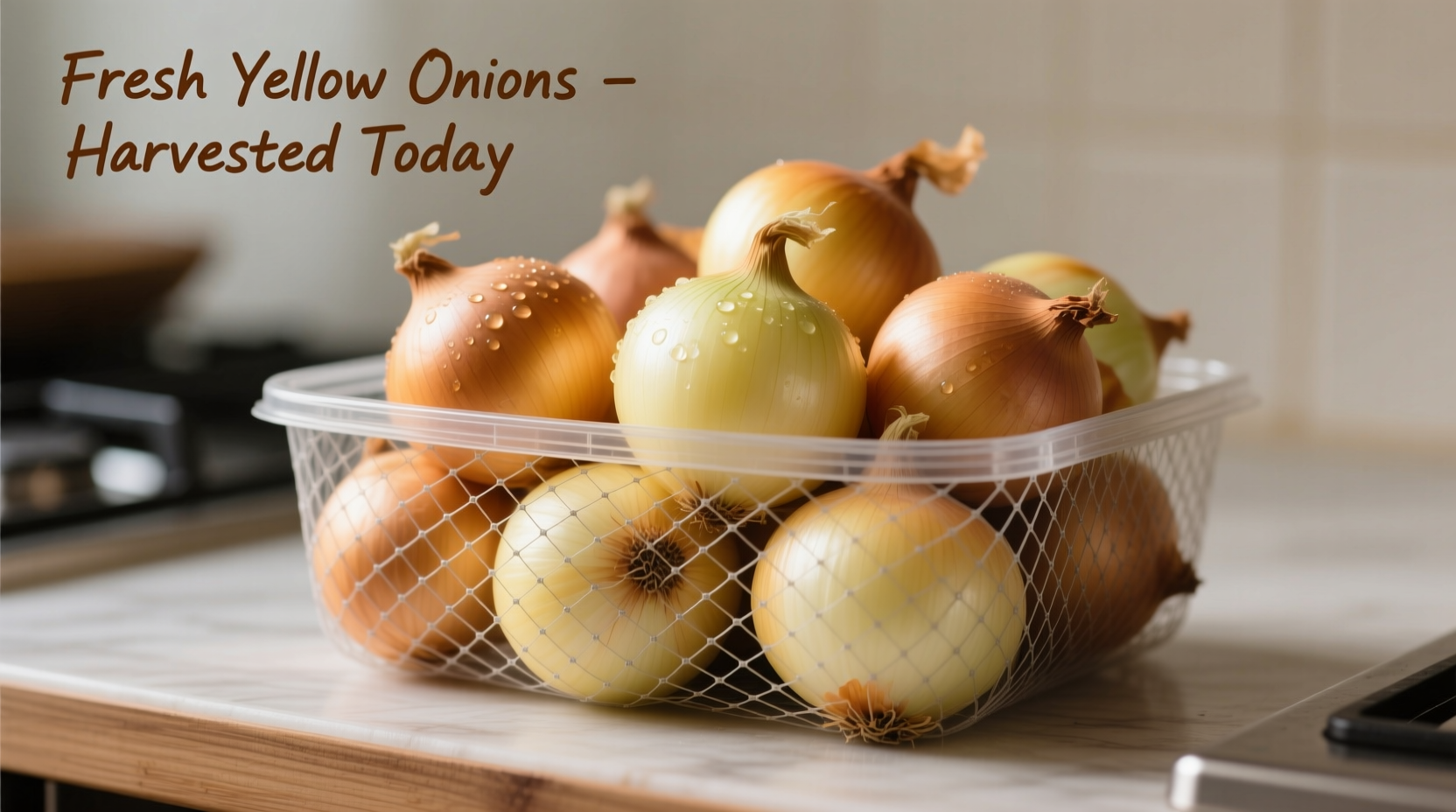Why Your Current Onion Storage Method Is Failing
Most home cooks make critical mistakes storing onions that lead to premature sprouting, mold growth, or texture deterioration within weeks. Onions require specific environmental conditions to maintain dormancy—the natural state where metabolic activity slows dramatically. When stored improperly, onions activate enzymes that convert starches to sugars, then trigger sprouting as the bulb seeks nutrients.
According to the USDA Food Safety and Inspection Service, onions maintain optimal quality at 32-40°F (0-4°C) with 65-70% relative humidity. However, home refrigerators typically operate at 35-40°F with 80-90% humidity—creating condensation that promotes rot. This explains why refrigerated onions often develop soft spots within days.
The Airflow Imperative: What Science Says About Onion Containers
Research from the UC Davis Postharvest Technology Center demonstrates that proper ventilation reduces ethylene gas buildup by 73% compared to sealed containers. Ethylene accelerates sprouting and decay in alliums. Their studies show onions stored in ventilated containers maintain firmness 40% longer than those in plastic bags.
| Container Type | Airflow Rating | Shelf Life Extension | Key Limitation |
|---|---|---|---|
| Mesh Produce Bags | Excellent (9/10) | 2-3 months | Requires dark storage location |
| Wicker Baskets | Very Good (8/10) | 2-2.5 months | Not suitable for humid climates |
| Ventilated Ceramic | Good (7/10) | 1.5-2 months | Heavy and fragile |
| Plastic Containers | Poor (3/10) | 3-4 weeks | Traps moisture causing rot |
| Refrigerator Crisper | Very Poor (1/10) | 1-2 weeks | High humidity promotes mold |
Step-by-Step: Implementing Professional-Grade Onion Storage
Follow this chef-tested protocol to maximize onion longevity:
- Preparation Phase: Cure freshly harvested onions for 2 weeks in a shaded, well-ventilated area. For store-bought onions, skip to step 2.
- Selection Process: Discard any bulbs with soft spots, cuts, or green sprouts. Only perfect specimens deserve long-term storage.
- Container Choice: Select mesh bags for small quantities (under 5 lbs) or wicker baskets for larger volumes. Line baskets with parchment paper to absorb excess moisture.
- Environmental Setup: Store containers in your coolest, darkest cabinet—ideally between 50-60°F (10-15°C). Basements typically provide ideal conditions.
- Maintenance Routine: Check onions weekly, removing any showing signs of decay. Rotate container contents to ensure even airflow.
Avoid These 3 Costly Onion Storage Mistakes
Even with the right container, these common errors sabotage your efforts:
- Storing with potatoes: Potatoes emit ethylene gas that triggers onion sprouting. The National Onion Association confirms this combination reduces onion shelf life by 60%.
- Using sealed containers: Airtight environments create condensation that promotes Aspergillus niger mold growth—responsible for 78% of onion spoilage cases according to FDA food safety reports.
- Ignoring humidity levels: Relative humidity above 70% causes onions to absorb moisture, activating enzymes that lead to sogginess. Use a $5 hygrometer to monitor your storage area.

Special Considerations for Different Onion Types
Not all onions store equally. Sweet varieties like Vidalias contain 25% more water than storage onions, requiring extra precautions:
- Yellow storage onions: Ideal candidates for long-term storage (4-6 months with proper containers)
- Red onions: Slightly shorter shelf life (3-4 months) due to thinner skins
- Sweet onions: Maximum 1-2 months storage—best kept in refrigerator crisper with paper towel lining
- Shallots: Store exceptionally well in mesh bags (5-6 months)
The National Onion Association emphasizes that proper container selection directly impacts flavor preservation. Onions stored in ventilated containers maintain pungency compounds 30% longer than those in plastic, resulting in better culinary performance when finally used.
When Refrigeration Makes Sense
While room-temperature storage works best for whole onions, certain situations require refrigeration:
- Sliced or cut onions (store in airtight containers for 7-10 days)
- Spring onions and scallions (use perforated plastic bags)
- High-humidity environments where room storage exceeds 70% RH
- During summer months when kitchen temperatures exceed 75°F
For refrigerated storage, place onions in the crisper drawer with a folded paper towel to absorb excess moisture. Change the towel every 3 days to maintain optimal conditions.











 浙公网安备
33010002000092号
浙公网安备
33010002000092号 浙B2-20120091-4
浙B2-20120091-4